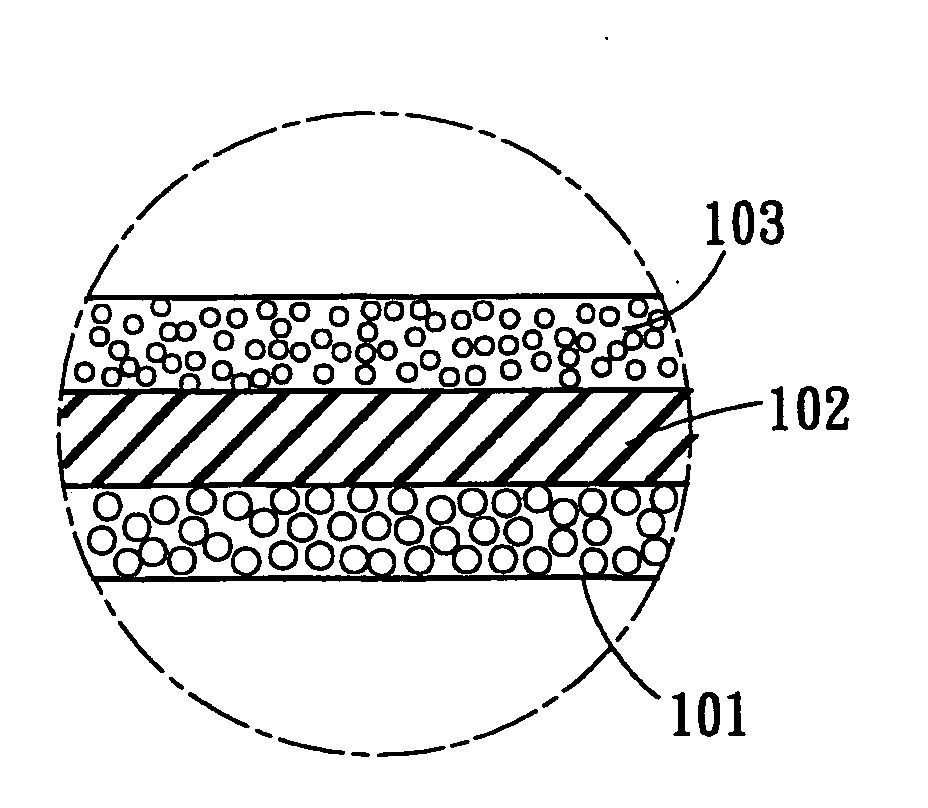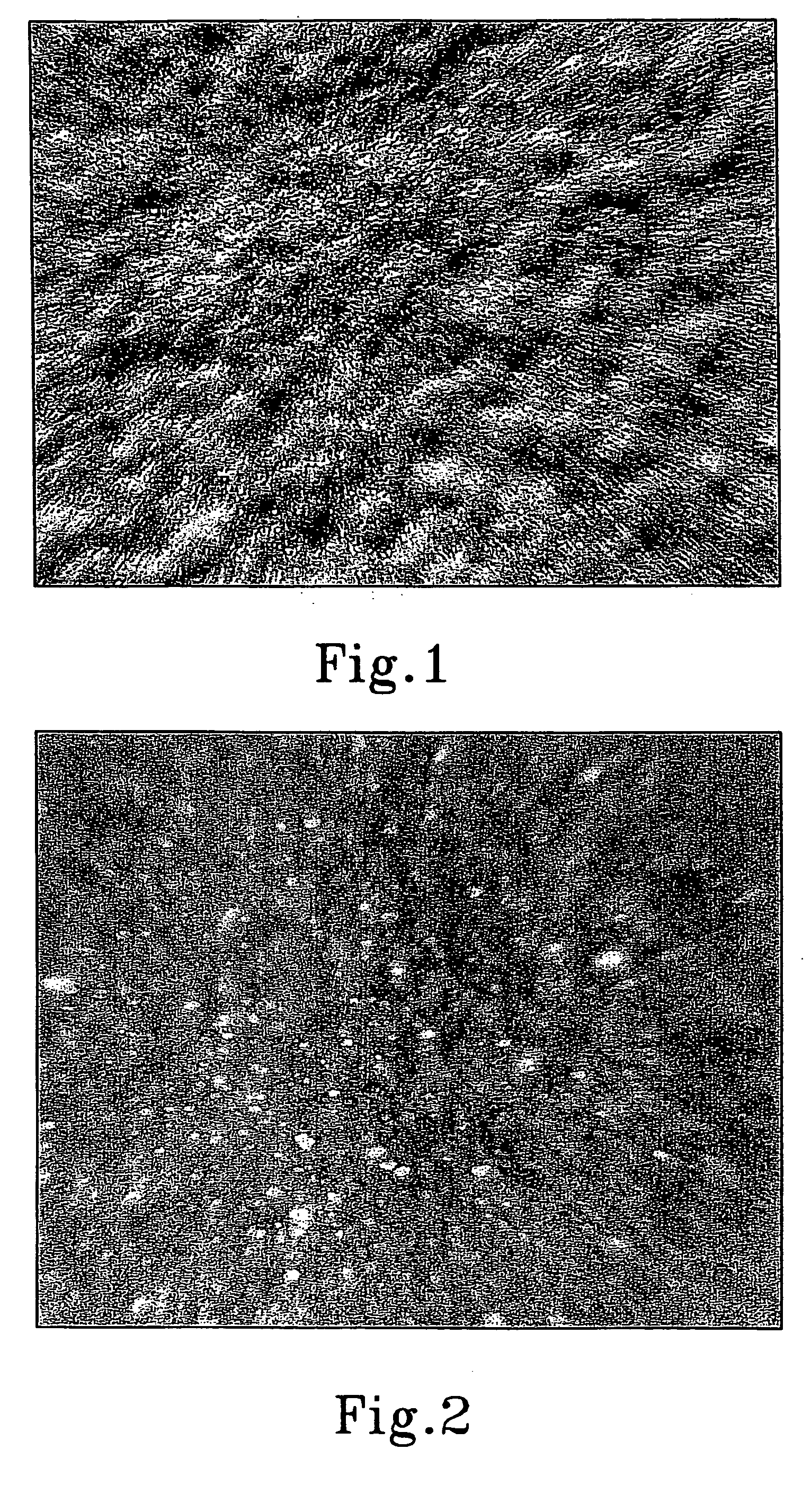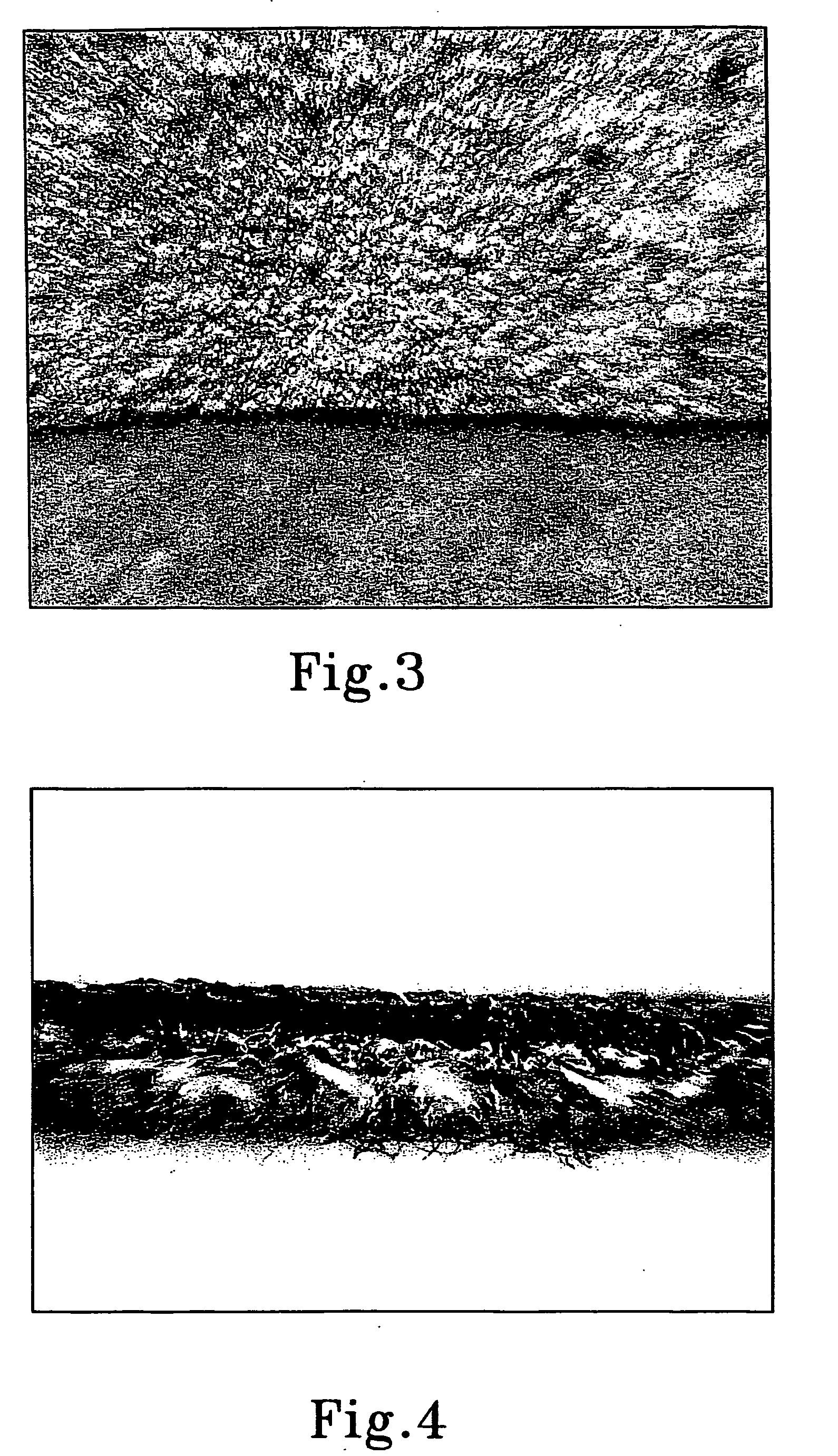Elastomeric foam article
a technology of elastomeric foam and article, which is applied in the field of elastomeric foam article, can solve the problems of difficult control of homogenous foam structure, too complicated to produce gloves, and inability to evenly distribute hollow plastic fillers in the polymeric material solution due to low density fillers, etc., to achieve low density, save material consumption, and benefit the environment
- Summary
- Abstract
- Description
- Claims
- Application Information
AI Technical Summary
Benefits of technology
Problems solved by technology
Method used
Image
Examples
examples 1-3
Disposable Glove
[0040] A ceramic glove mold is preheated to about 50° C.; and then dip into a coagulant agent solution at a temperature about 50° C.; and then pass through a oven at temperature about 90-140° C. for 1-3 minutes to dry the coagulant layer; and then dip into a elastomeric material solution at a temperature about 20-30° C. for about 5-15 seconds; and then dip into a elastomeric material solution comprising thermally expandable microspheres at a temperature about 20-30° C. for about 5-10 seconds to gel the desired thickness elastomeric material layer and the expandable elastomeric material layer onto the mold; and then pass through a oven at a temperature about 80° C. for about 30-60 seconds; and then dip into a water at a temperature of 50° C. for about 3-6 minutes to leach out the water soluble materials; and then pass through a oven at a temperature about 80-100° C. for about 5-10 minutes to evaporate the moisture of gelled elastomeric material and then increasing t...
example 4
PVC Disposable Glove
[0042] For making the non-aqueous polymeric system such as polyvinyl chloride glove is as following:
[0043] A ceramic glove mold is preheated to temperature at about 70-80° C.; and then dip into a polyvinyl chloride solution for about 5-10 seconds; and then withdraw and drain to get the desired thickness layer on the mold; and then pass through a oven at temperature about 160-195° C. for 3 minutes; and then dip into polyvinyl chloride solution containing thermally expandable microspheres for about 3-8 seconds; and then withdraw and drain to the desired thickness layer; and then pass through a oven at temperature about 160-195° C. for 3-5 minutes to cure, foam and binding two layers together; and then cooled, strip and turn inside out the glove from the mold. The thermally expandable microspheres is selected from the expandable microspheres diameter about 40 microns and the expanding temperature range is about 110-200° C.
[0044] The first PVC layer solution comp...
example 5
Household Glove
[0050] A ceramic glove mold is preheated to about 50° C.; and then dip into a coagulant agent solution up to the forearm about 32 cm depth at a temperature about 50° C.; and then pass through a oven at temperature about 90-140° C. for 1-3 minutes to dry the coagulant layer; and then dip into the first elastomeric material solution comprising thermally expandable microspheres up to the cuff about 20 cm depth at a temperature about 20-30° C. for about 5-10 seconds; and then dip into the second elastomeric material solution up to the forearm about 30 cm depth at a temperature about 20-30° C. for about 5-10 seconds; and then withdraw and pass through a oven at a temperature about 80° C. for 30 seconds; and then dip into the third elastomeric material solution comprising thermally expandable microspheres up to the forearm about 30 cm depth at a temperature about 20-30° C. for about 10-20 seconds onto the mold; and then pass through a oven at a temperature about 80° C. fo...
PUM
| Property | Measurement | Unit |
|---|---|---|
| density | aaaaa | aaaaa |
| wall thickness | aaaaa | aaaaa |
| wall thickness | aaaaa | aaaaa |
Abstract
Description
Claims
Application Information
 Login to View More
Login to View More - R&D
- Intellectual Property
- Life Sciences
- Materials
- Tech Scout
- Unparalleled Data Quality
- Higher Quality Content
- 60% Fewer Hallucinations
Browse by: Latest US Patents, China's latest patents, Technical Efficacy Thesaurus, Application Domain, Technology Topic, Popular Technical Reports.
© 2025 PatSnap. All rights reserved.Legal|Privacy policy|Modern Slavery Act Transparency Statement|Sitemap|About US| Contact US: help@patsnap.com



